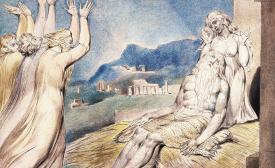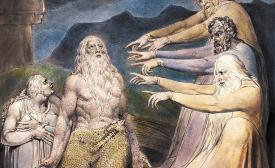In a perfect storm

‘The Lord Answering Job Out of the Whirlwind,’ part of a series of paintings on the Book of Job by William Blake, 1805-06, commissioned by Thomas Butts. (Public Domain)
Years ago, I saw a movie about a fishing crew caught at sea when two storms and a hurricane converged to create a “perfect storm.” I have been reminded of this as widespread protest after the death of yet another African-American man in the custody of white police officers crashed into an already devastating novel-coronavirus pandemic and economic crisis.




